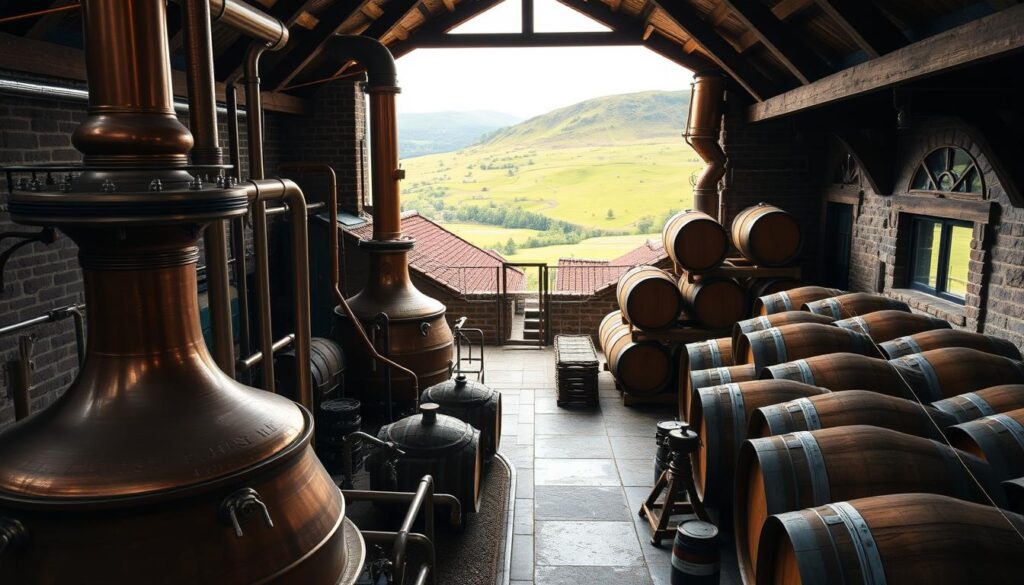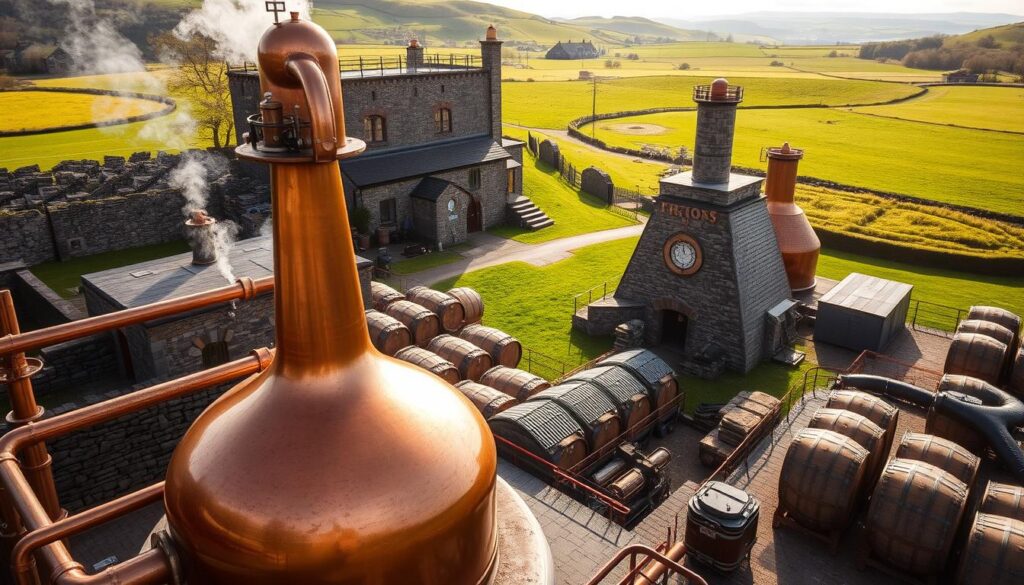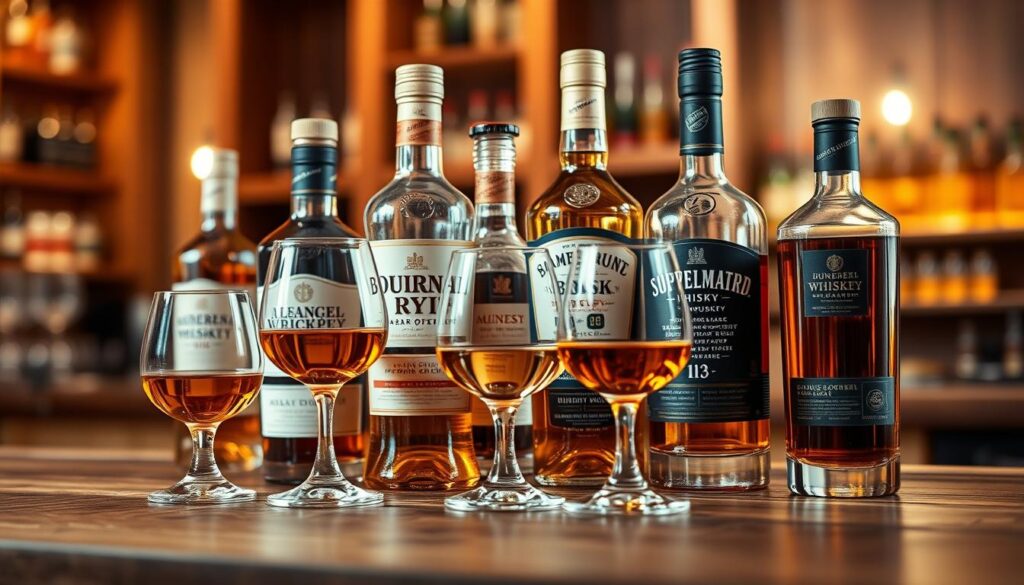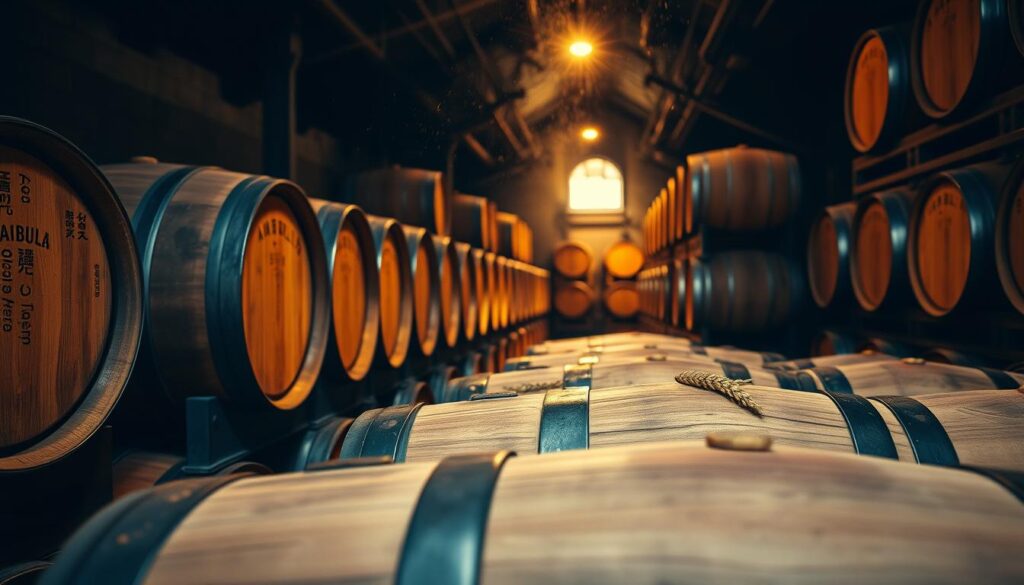When it comes to whisky, the variety and craftsmanship behind each bottle can be fascinating. Among the many types, single malt whisky stands out for its rich history and distinct qualities. But with so many whiskies on the market, how can you easily identify a true single malt?
What exactly makes a scotch ‘single malt,’ and what sets it apart from other whiskies? Understanding the characteristics and clues that define this category can deepen your appreciation and enhance your tasting experience.
In this guide, we’ll walk you through what makes single-malt whisky unique and how to recognize it when you encounter it. Keep reading to discover the key features of single malt whisky and tips for identifying it with confidence.
What Is a Single Malt Whisky
Single malt whisky is a distinct type of Scotch whisky crafted under strict guidelines. The distillery produces it using only malted barley, setting it apart from other whisky varieties.
The production process follows time-honored traditions. They distill the spirit in copper pot stills to an alcohol content of about 60-70%. Before aging, they dilute it to approximately 60% with pure water.
To classify as whisky, the spirit must mature in oak casks (no larger than 700 liters) for at least three years. Most premium single malts age for 10-15 years, which enhances their complexity. Renowned brands like Balvenie, Bowmore, and Laphroaig uphold these traditions, with some even malting their own barley.
Although single malts account for only 10% of Scotch whisky sales, they represent a significant portion of Scotland’s whisky exports. Their meticulous craftsmanship makes them a favorite among whisky enthusiasts worldwide.

The Meaning of “Single” in Single Malt
Many people think “single” in single malt scotch means it comes from one barrel. But it actually means it comes from one place in Scotland. A single malt comes from spirits distilled in many casks at the same distillery.
Master distillers blend different casks to create a consistent taste. For example, Speyside distilleries in Scotland mix whisky from ex-bourbon barrels with sherry cask spirits. This blending keeps the unique flavor of each distillery.
This method is different from single cask bottlings, which come from just one barrel. While single cask releases are special, traditional single malt scotch benefits from blending. This way, distilleries can keep their signature taste, even with natural variations in barrels.
Understanding Malted Barley in Whisky Production
Barley, a grain containing over 60% starch, is the foundation of malt whisky. Distillers prefer spring barley for its high starch content, which is essential for creating fermentable sugars. This is the first step in the complex malting process.
The process begins by soaking the barley to raise its moisture level from 12% to 46%. Over the next five days, the grain germinates under controlled conditions, with workers turning it regularly to ensure even growth. This meticulous care is crucial for developing the enzymes needed in whisky production.
After germination, the barley undergoes kilning, a drying process that reduces its moisture to about 4% while preserving the vital enzymes. Traditional methods, like floor malting used by distilleries such as Springbank in Scotland, rely on skilled maltsters. They are crucial for achieving the ideal timing and results.
Malted barley plays a central role in whisky production, influencing the spirit’s character. During fermentation, yeast transforms the barley’s sugars into alcohol, producing a liquid called wash with 8-9% alcohol. The distillers then convert this wash into the whisky we savor.

The Art of Traditional Pot Still Distillation
Traditional pot still distillation begins with washing malted barley mash in copper stills. This step is crucial for creating the unique flavors found in various whiskies.
Every distillery has its own special still shape that affects the spirit’s character, making each whisky unique.
Scottish whisky making involves double distillation, reaching about 70% alcohol. The first distillation lasts 4-6 hours, producing low wines with 21-30% alcohol. The second distillation turns these low wines into the final spirit.
During this important phase, master distillers separate the hearts (71-72% alcohol) from less desirable parts. This careful separation is key to creating a high-quality spirit.
In contrast, Irish distilleries use triple distillation, reaching alcohol levels over 80%. This extra step makes the spirits very smooth. The process requires precise temperature control and timing to get the perfect flavors and aromas.
Each distillery matches its wash and spirit stills for the best capacity. The distillery discards the leftover pot ale after distillation. The distillery redistills the foreshots and feints, ensuring they waste nothing in making these fine spirits.
Maturation Process and Barrel Selection
The magic of aged whisky happens during its maturation process. It needs at least three years in oak barrels. During this time, the spirit changes, gaining flavors like vanilla, caramel, and spices.
American white oak barrels add unique tastes of coconut, peach, and toffee. These flavors mix with the spirit’s own.
Experts pick barrels with care, weighing size and past use. The 53-gallon American barrel is the standard, but smaller 13-gallon quarter casks make flavors come out faster.
Every year, the distillery loses 2-5% of the spirit to evaporation. People refer to this loss as the “angel’s share.”
The weather and the location where the distillery stores the barrels play a significant role. Warmer places make the whisky age faster. First-fill casks add strong flavors quickly, while refill casks give milder tastes over time.
The oak’s makeup is key for whisky production. French oak barrels, with their tight grain, add flavors of dried fruit and spices. These casks shape the spirit’s taste until it’s bottled.

Age Statements and Their Significance
Age statements on whisky bottles directly indicate the age of the youngest spirit in the blend, showcasing the minimum time the whisky matured in oak barrels. For example, a 12-year-old single malt spent at least 12 years aging, a process that significantly shapes its flavor profile.
Countries enforce specific aging requirements:
- Scotland, Ireland, and Canada: Require whiskies to age for a minimum of three years.
- United States: Age statements for whiskies aged less than four years are mandatory, while whiskies aged four years or more can omit this detail.
- Japan: Introduces new regulations in April 2024, requiring Japanese whisky to mature for at least three years in wooden barrels.
Distillers increasingly produce No Age Statement (NAS) whiskies, which allows them to blend spirits of different ages while maintaining consistent flavors. Brands such as Jack Daniel’s and Jameson rely on this approach to craft reliable, signature profiles.
Once bottled, whisky stops aging. The age statement strictly refers to the time spent maturing in oak barrels, not the time since bottling. In the U.S., laws also require specific labels for spirits aged in reused oak containers, distinguishing them from those aged in new charred oak barrels.
Regional Characteristics of Single Malts
Scotland’s whisky scene is split into different areas, each with its own taste. The Speyside region has half of Scotland’s distilleries. Here, you’ll find whiskies with notes of honey and light smoke.
The Highland region covers most of Scotland’s mainland. It’s famous for whiskies with a wide range of flavors. From gentle heather to rich toffee, Glenmorangie and Dalmore make full-bodied whiskies.
The Lowlands offer lighter, floral drams, with Auchentoshan leading the way.
Islay is popular for its bold, peated whiskies, which can contain up to 60 parts per million of peat. Distilleries like Laphroaig and Ardbeg make intense, smoky whiskies.
The Islands region, including Talisker from Skye and Highland Park from Orkney, offers whiskies with sweet and salty notes.
Campbeltown was once the whisky capital. Today, Springbank and Glen Scotia keep this legacy alive. These distilleries make complex spirits with briny coastal flavors and rich vanilla undertones. They reflect the region’s proud history in single malt production.
Single Malt vs Other Whisky Types
The world of whisky broadly categorizes into single malts and blends as the primary distinctions. Single malts show off the art of whisky making, using only malted barley from one distillery. Blended scotch, on the other hand, mixes single malts with grain whiskies for a smoother taste.
Grain whiskies are different because they use more than barley. They are the base of many blends, adding smoothness. They make them in column stills, unlike single malts, which use pot stills.
It’s interesting to note that blends make up 90% of scotch sold worldwide. Single malts get high-end praise and prices, but blends are more affordable and consistent. This mix of tradition and affordability keeps both types popular today.
Another distinction lies in aging. Single malts must age for at least three years in oak casks, with many maturing for 10-15 years to develop rich and complex flavors. Blends, often containing younger whiskies, rely on the expertise of master blenders to deliver a well-rounded and widely appealing taste.
This balance of tradition and accessibility ensures both whisky types maintain their appeal in today’s market.

The World of Single Malt: Your Next Sip Awaits
Single malt whisky embodies tradition, craftsmanship, and a diverse range of flavors shaped by its region of origin. Whether you prefer the smoky malts of Islay or the smooth drams of Speyside, there is something for every palate. Exploring the world of single malt whisky is a journey worth taking.
Now that you’ve uncovered what makes single-malt whisky so special, why not take your whisky journey to the next level? Discover the rich history, unique regional styles, and iconic distilleries that define Scotland’s single malt legacy.
From the smoky Islay malts to the smooth Speyside classics, Scotland Whisky offers a wide range of options. We have everything you need to deepen your appreciation for this exceptional spirit. Explore more and let the world of single malts come alive!